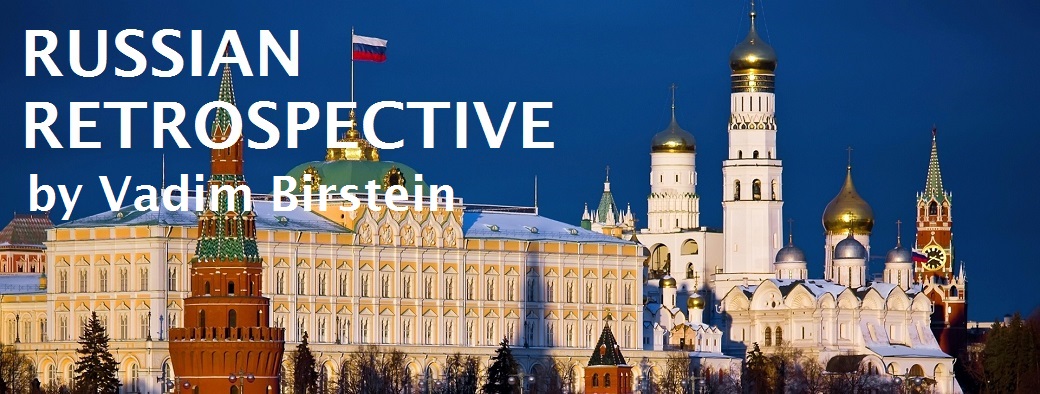 On September 19, 2017, a gigantic monument was unveiled in the central part of Moscow, ordered by the Russian Military-Historical Society (RVIO) founded in 2012 by President Vladimir Putin’s decree. It was a 5-meter-high statue of Mikhail Kalashnikov, the designer of the infamous machine gun in 1949, on a 4-meter-high pedestal. The gigantic figure of Kalashnikov holds a machine in his hands. As the author of the monument, the sculptor Salavat Shcherbakov said, the figure is holding the machine gun carefully, “like a violin of Stradivarius.” There is an image of Archangel Mikhail on a horse behind the statue. Shcherbakov said that he tried to reflect the theme of the eternal confrontation between good and evil in the monument.
On September 19, 2017, a gigantic monument was unveiled in the central part of Moscow, ordered by the Russian Military-Historical Society (RVIO) founded in 2012 by President Vladimir Putin’s decree. It was a 5-meter-high statue of Mikhail Kalashnikov, the designer of the infamous machine gun in 1949, on a 4-meter-high pedestal. The gigantic figure of Kalashnikov holds a machine in his hands. As the author of the monument, the sculptor Salavat Shcherbakov said, the figure is holding the machine gun carefully, “like a violin of Stradivarius.” There is an image of Archangel Mikhail on a horse behind the statue. Shcherbakov said that he tried to reflect the theme of the eternal confrontation between good and evil in the monument.
Sculptor Shcherbakov is infamous for gigantic monuments. His previous sculpture was an enormous figure of St. Vladimir in front of the Kremlin. St. Vladimir never visited Moscow since he lived more than a hundred years before the first wooden walls of Moscow were built in the 12th Century. Similarly, there is no connection between Kalashnikov and Moscow, where he never lived. Most of his life he spent in the city of Izhevsk, where he died in 2013. He was 93-years-old.
At the ceremony, Vladimir Medinsky, Minister of Culture and the RVIO Chair, gave the following speech: “Kalashnikov is to some extent [Ivan] Kulibin [a Russian inventor of the end of 18th Century – V. B.] of the 20th Century, the embodiment of the best features of the Russian people. Unusual natural talent, simplicity, honesty, organizational talent that allowed him to create a whole line of weapons to protect the Fatherland, among which, of course, the Kalashnikov assault rifle is a true cultural brand of Russia.” Medinsky did not elaborate how an automatic rifle with which literally millions of people were killed could be “a true cultural brand of Russia.” The journalist Pavel Gutiontov, who once interviewed Kalashnikov, commented: “Kalashnikov himself often said that he was not proud of the fact that he was a designer of the weapon that caused deaths of thousands and thousands of people, and that he would prefer the glory of an inventor of a lawnmower.”
Later it appeared that on a plaque on the pedestal, Shcherbakov depicted a design not of Kalashnikov’s gun, but of a famous gun of WWII, Sturmgewehr 44, created by the German weapon developer Hugo Schmeisser. Shcherbakov explained that he used a picture he found on the Internet. On September 22, the plaque was removed.
The same September 22, 2017, bronze busts of Vladimir Lenin, the founder of the Soviet Union, Josef Stalin, the Soviet dictator, and Yuri Andropov, the feared KGB Chairman and then Soviet leader, were unveiled in Moscow. They were among seven new busts of Soviet leaders (also Nikita Khrushchev, Leonid Brezhnev, Konstantin Chernenko, and Mikhail Gorbachev) added to the line of busts at the “Alley of Rulers,” recently erected in the central Moscow. The busts were ordered by the same RVIO that ordered Kalashnikov’s monument.
The infamous sculptor Zurab Tsereteli, who was the author of the busts, film director Stanislav Govorukhin, head of the State Duma Committee on Culture, as well as Alexander Zhuravsky, Deputy Minister of Culture, attended the opening ceremony. Interestingly, before the event Mikhail Gorbachev told the press that he was not against erecting his monument while he is still alive.
In his speech, Alexander Zhuravsky stated: “The ‘Alley of Rulers’ is a symbol of continuity and succession in our history, history without deleted names, without forgotten historical events and periods […] Lenin and Stalin can be assessed in different ways, but both of them are part of the history of Russia, which can’t be forgotten.”
Right after the opening of Stalin’s bust, a woman appeared with a poster on which one could read the text of the short poem “To Stalin’s defenders”, written in 1962 by the famous Russian poet Anna Akhmatova, where “Stalin’s defenders” were called “nice lovers of torture” and “experts in the production of orphans.”
Two weeks earlier, on September 7, 2017, the Russian independent Yuri Levada Analytical Center (Moscow) reported that over the past 12 years the proportion of Russians supporting the installation of monuments to Stalin grew from 36 to 39%.
However, on September 28, 2017, in the city of Novosibirsk the Art Council did not approve the installation of Stalin’s bust at the two sites proposed by the initiators of the project. No member of the council voted for the installation, about half opposed, several abstained. Konstantin Golodyaev, historian and an employee of the Museum of the city of Novosibirsk, declared that the members of the artistic council have a moral responsibility because “in Siberia, 130 thousand people were executed, in Novosibirsk alone 11 thousand were repressed.”
